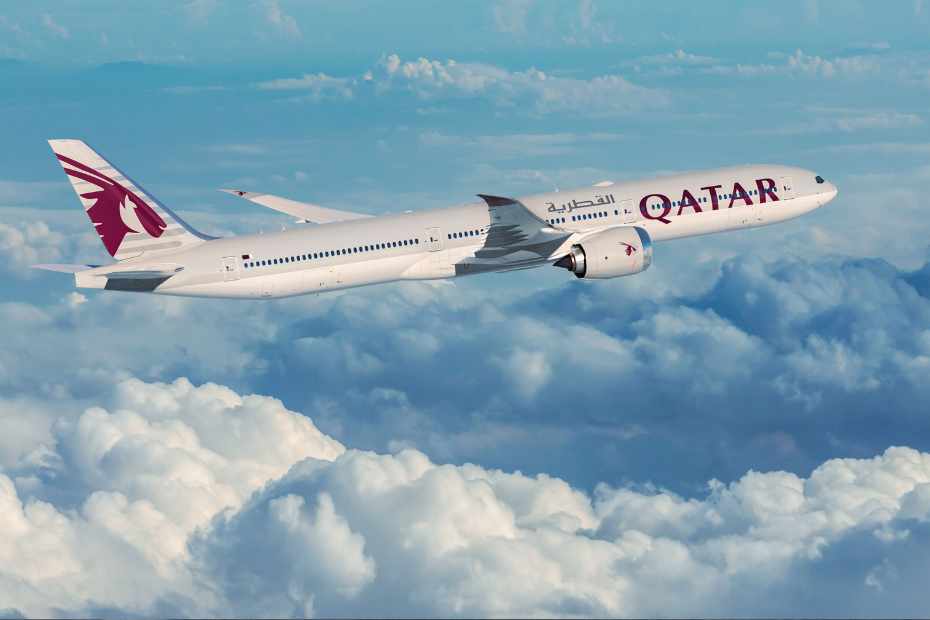How to sleep on a plane: Doctors and travel experts share their hacks
Some people can fall asleep before a plane’s wheels lift off the tarmac. Other travelers spend the entire time squirming in their seats, struggling to get comfortable. If you’re one of those passengers who have a hard time falling asleep on a plane, or just can’t seem to snooze for long on board, all is not lost. Yahoo Life turned to the pros — from travel experts to sleep doctors — for their tips on getting some shut-eye at 30,000 feet.
Could you actually be one of those people who arrives at their destination feeling well-rested and not groggy and grouchy? Experts say yes. Here’s how to prep, what to pack, what to avoid and why you should take a beat to really think about when you’re booking your flight.
Here’s what to do.
Pick your flight time wisely
Before getting to the day-of flight logistics, the first choice that many passengers make regarding sleep — often without realizing it — is their flight time.
For long-haul flights to somewhere like Europe, it’s ideal to book that later evening flight, Samantha Brown, the Emmy-winning host of PBS’s Samantha Brown’s Places to Love, tells Yahoo Life. Your body is probably already tired, and it’s probably taking off around your normal bedtime, which makes it that much easier to fall asleep. However, flight times depend on your destination so it’s not always possible to pick and choose.
Also, be cautious when booking an early flight because saving money or time may not be worth the missed sleep before departure, especially if you have trouble napping on planes. “Having to wake up earlier may translate into getting less sleep, which may translate into not feeling well when you land at your destination,” Dr. Luis Ortiz, a physician in the Sleep Center at Johns Hopkins All Children’s Hospital, tells Yahoo Life.
One last thing: If you really struggle to get comfortable in the middle, make it a priority (which usually means paying extra) to book a window seat or a row with more leg room.
Shift your internal clock
“In general, traveling across time zones can certainly be more difficult the further you go, obviously, and [there are] different problems if you’re traveling east versus traveling west,” Dr. Eric Davis, a sleep medicine expert at the University of Virginia’s School of Medicine, tells Yahoo Life.
Intentionally shifting your internal clock in the week before travel can help you to avoid jet lag and sleep better on the plane, because longer flights are usually timed to align with the time zone of the destination.
If you’re traveling east — whether that’s the East Coast of the U.S. or Europe — both Davis and Ortiz suggest shifting your internal clock up a little each day. Rising 15 or 30 minutes earlier in the morning, moving bedtime a little earlier each night and eating meals timed more closely to the times when you’ll be dining during your trip can help your body adjust more quickly after landing and minimize jet lag symptoms.
The same advice applies for traveling west, but instead of shortening the day, you’re lengthening it. Davis says this transition tends to be easier for people because they usually don’t need to sleep on a plane. Instead, they are trying to extend their day by waking up later, going to bed later and eating later. “If [you’re] traveling from New York City to Los Angeles and it’s the middle of the day, you don’t necessarily need to sleep on the plane,” Davis says, noting that the bigger concern in that scenario would be staying up later and delaying sleep until “the new normal bedtime.”
Prepare for sleep before you board
“For me it’s the pregame,” Brown tells Yahoo Life. From her airport attire to what she packs for the plane and eats or drinks before takeoff, Brown makes sure she and the rest of her family, including her 11-year-old twins, are prepared to snooze. Here are her tried-and-true tips after 25 years as a professional traveler:
-
Avoid caffeine: Brown recommends turning down the in-flight coffee service so that the caffeine doesn’t keep you up.
-
Dress to sleep: You want to wear comfortable, loose-fitting clothes, so you don’t get too hot or too cold. According to Brown, that also means “no underwire bras, no tight waistband — because we all expand, we all bloat a little on a plane.”
-
Eat in the airport: “When I’m at the airport, I eat a big meal. I don’t eat on the plane,” says Brown, explaining that she doesn’t want the meal service to disrupt her sleep.
-
If you have time, walk: “I walk and walk and walk the terminal and try to wear myself out, so by the time I get to my seat all I do is rest and go to sleep,” Brown says.
-
Do your pre-bed routine before you board: “The best thing is to make sure [you and] the kids have gone to the bathroom, brushed teeth — all those signals [that] we’re calming things down a bit,” she adds.
Avoid screens and alcohol on the plane
Like Brown, Rob Taylor, the founder and lead journalist for the LGBTQ family travel blog 2TravelDads.com, is a frequent flier. His two biggest pieces of advice for sleeping on a plane are to avoid screens and alcohol, advice that is scientifically supported.
Davis agrees. “It’s hard traveling because they also put a TV right [in] your face, and avoiding bright lights is an important part of promoting sleep,” he says. “With my children [on a plane], the first thing they want to do is check out the movies or games, but whatever you can do to limit that to a reasonable time frame is important.” And it’s maybe not the best time to catch up on all those films you missed in the theaters. “As we set limits for our kids for screen time on planes, we should also think about setting limits for ourselves,” he adds.
Adults should also avoid alcohol before flying and while on the plane. “Alcohol can negatively impact your sleep architecture,” Ortiz explains. “[You] may initially fall asleep very quickly but then have sleep fragmentation.” That can include erratic dreams and waking up more easily during the flight.
Bring a sleep cue object
Taylor swears by his neck pillow whereas his husband refuses to travel without noise-canceling headphones. Brown likes to wear an eye mask in case the people next to her are using screens.
Whatever your object is, make sure you have it on board because it can make a big difference when trying to fall asleep, advises Davis. Not only do objects like eye masks, headphones, blankets or stuffed animals create a more optimal and comfortable sleep environment, but they can also signal to your body that it’s time to rest. “We are really creatures of habit and have certain cues about triggering sleep,” Davis says.
Use medication carefully
As far as melatonin or over-the-counter and prescription-strength medicine go, using them to aid sleep is an individual decision and people should consult their doctors.
Brown has personally found melatonin to be helpful and Taylor may take an Advil PM before boarding, but Davis says it’s not recommended to try any new medicine — especially sleep medications, which tend to have a lot of potential side effects — before traveling. However, if you are someone who suffers from flight anxiety, Ortiz recommends asking your doctor about medication that may help with both your stress and sleep.
Be aware of medical risks and complications
Because people tend to worry about whether or not they will fall asleep on a plane, many are unaware of the risk of being still for so long should they actual get a snooze in. Long flights increase the risk of deep vein thrombosis, cautions Ortiz. It’s “a clot that forms in your large veins due to laying still for a very long time, and of course long car trips and long air flights are probably the biggest situations when a person may have this,” he says. To avoid DVT, Ortiz encourages passengers not to cross their legs for extended periods of time and to move them around and try and straighten them when possible. This doesn’t mean people shouldn’t sleep when flying, but they should try to balance their need for sleep with some movement during the flight.
Also, the amount of oxygen in the air is less than what people breathe on the ground and “that can translate to poor sleep if you already have sleep apnea,” Davis notes. “[If your] sleep quality isn’t good to begin with and gets even worse when you’re in the sky, you might want to think about a sleep apnea evaluation.”
Related
Turkish Airlines and Qatar Airways Suspend Mogadishu Flights Following US…
Home » Airlines News of Qatar » Turkish Airlines and Qatar Airways Suspend Mogadishu Flights Following US Embassy Terror Alert, Raising Security Concerns at
Local tourism destinations grow fast
Men sit at the Doha Corniche backdropped by high buildings in Doha on March 3, 2025. Photo by KARIM JAAFAR / AFP DOHA: Local tourism destinations are g
Hajj, Umrah service: Qatar Airways introduces off-airport check-in for pilgrims
Image credit: Supplied Qatar Airways has introduced an off-airport check-in
IAG, Qatar Airways, Riyadh Air, Turkish Airlines, Lufthansa & more…
Turkish Airlines – a Corporate Partner of the FTE Digital, Innovation & Startup Hub – is charting a course to rank among the top 3 global airlines for












